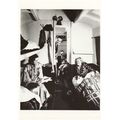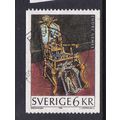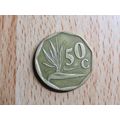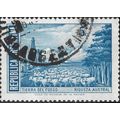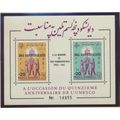Madara, Bulgaria - Horsemen bas relief - postcard c.2000s
- Condition : Used
- Dispatch : 2 Days
- Brand : None
- ID# : 206836862
- Quantity : 1 item
- Views : 1040
- Location : United Kingdom

- Seller : justthebook (+1704)
- Barcode : None
- Start : Wed 02 Feb 2022 07:10:47 (EDT)
- Close : Run Until Sold
- Remain : Run Until Sold
Checks/Cheques
 for 1 item(s) edit
for 1 item(s) edit
Shipping Calculator
More Listings from This Seller view all
Seller's Description
- Postcard
- Picture / Image: The Madara Horseman, bas-relief dated around 8th-9th cent.
- Publisher: Format S., Sofia
- Postally used: no
- Stamp: n/a
- Postmark(s): n/a
- Sent to: n/a
- Notes / condition: slightly larger than 'modern'
Please ask if you need any other information and I will do the best I can to answer.
Image may be low res for illustrative purposes - if you need a higher definition image then please contact me and I may be able to send one. No cards have been trimmed (unless stated).
------------------------------------------------
Postage & Packing:
Postage and packing charge should be showing for your location (contact if not sure).
No additional charges for more than one postcard. You can buy as many postcards from me as you like and you will just pay the fee above once. Please wait for combined invoice. (If buying postcards with other things such as books, please contact or wait for invoice before paying).
Payment Methods:
UK - PayPal, Cheque (from UK bank) or postal order
Outside UK: PayPal ONLY (unless otherwise stated) please. NO non-UK currency checks or money orders (sorry).
NOTE: All postcards are sent in brand new stiffened envelopes which I have bought for the task. These are specially made to protect postcards and you may be able to re-use them. In addition there are other costs to sending so the above charge is not just for the stamp!
I will give a full refund if you are not fully satisfied with the postcard.
----------------------------------------------
Text from the free encyclopedia WIKIPEDIA may appear below to give a little background information (internal links may not work) :
*************
The Madara Rider or Madara Horseman[1] (Bulgarian: Мадарски конник, Madarski konnik) is an early medieval large rock relief carved on the Madara Plateau east of Shumen in northeastern Bulgaria, near the village of Madara. The monument is dated in the very late 7th,[2] or more often very early 8th century, during the reign of Bulgar Khan Tervel.[3] In 1979 became enlisted on the UNESCO World Heritage List.[4]
The relief depicts a majestic horseman 23 m (75 ft) above ground level in an almost vertical 100 m (328 ft)-high cliff. It is of almost natural size.[3] The horseman, facing right, is thrusting a spear into a lion lying at his horse's feet, and on the left a dog is running after the horseman.[5] The carving of the horseman's halo and garments, as well as the bird in front of the horseman's face, are barely recognizable due to the erosion and bad condition of the monument.[6] The relief is similar to the carbon images found in Saltovo, Soulek, Pliska and Veliki Preslav.[1]
Origin tradition
The meaning and symbolism of the depiction is uncertain, as well its actual masonry tradition and cultural source.[5]
In the scholarship the origin of the relief is connected with the Bulgars ethnogenesis – the semi-nomadic equestrian warrior culture from the Eurasian Steppe.[7] Others saw in the relief resemblance to the Sasanian rock relief tradition.[1][8][5] The hero-horseman is a common character of Turkic and Iranian-Alanic mythology.[5] It is sometime considered that the horseman represents or is related to the Bulgar deity Tangra, while Vladimir Toporov related it to the Iranian deity Mithra.[5]
Others noted a more simple explanation – that the relief represented Khan Tervel (701–718 AD),[3] or like previously considered and now rejected, Khan Krum (802–814 AD).[9]
Some considered it an example of the Thracian horseman – a recurring motif of a deity in the form of a horseman in the Paleo-Balkanic mythology.[10][11] The motif typically features a caped horseman astride a steed, with a spear poised in his right hand. He is often depicted as slaying a beast with a spear, although this feature is sometime absent.[12][13][14] Initially considered (and later abandoned) by Konstantin Josef Jireček and Karel Škorpil, the assumption was gradually rejected because of differences in the iconographic details, and the relation with the animals (there's no dog[11]).[1][9]
The relief probably incorporates both autochthonous Thracian and the newly arrived Bulgars cultural cults.[10] The monumental size, iconography and the details (stirrup, halo, skull-cup, bird etc.) is generally part of the Bulgar tradition, while the rightward direction and the lion of the Thracian tradition.[15]
Archaeology
In the 1924–35, beneath the relief (some 250 m north) were found the remnants of a complex which is considered to have been a pagan shrine (three-aisled church) and a rectangular building, probably the ruler's private dwelling, where the ruler did sacral rituals related to Tangra.[16][17] At the site was also found a damaged inscription by Khan Omurtag which mentions the deity Tangra.[18][19]
The complex is commonly dated to the second quarter of the ninth century,[20] as the 1970s excavations dated the pottery between 8th and 10th century.[21] Some argue that the earliest buildings were founded after the conversion to Christianity.[21] Thus the pagan temple (i.e. church) and the building would have been built on an early Byzantine basilica.[22] To the west of the building was found Christian burial, with golden decorated belt, dated c. 900 AD.[23]
Throughout the 20th century, two miles (c. 3.2 km) northeast from the relief was found another group of buildings, consisting of 5th-6th century basilica, with inner rectangular structure, which some interpreted as the pagan temple (but without clear evidence).[22]
Inscriptions
Three partially preserved texts in Medieval Greek, carved in the rock, can be found around the image of the rider. They bear important information regarding the history of Bulgaria in the period. The oldest inscription is the work of Tervel (701–718 AD), thus it is considered that the relief was created during his rule or immediately after the Bulgars settled in 680–681 AD.[2][3] The other inscriptions refer to the Khans Krum (802–814 AD) and Omurtag (814–831 AD) who are most likely the ones who ordered the carvings.[24][3]
Inscription I:[2]
Justinian the emperor made a treaty [...] the Bulgars [...] and came to Tervel. My uncles at Thessaloniki did not trust the emperor with the cut-off nose and went back to the Kisiniie [...] one of his [...] The ruler Tervel made a treaty and gave to the emperor five thousand [...] with my help the emperor scored a fine victory.
Inscription II:[2]
[...] gold. He gave eighteen [...] gold the ruler [...] soldiers [...] a ruler [...] the Greeks (Byzantines) [...] what I gave to you, I will give you every year, and the emperor sent to the ruler [...] and asked the ruler Krumesis [...] the ruler [...] divided the gold [...] began [...] he gave from [...] the ruler Krumesis gave [...] that sea [...] you did [...] the ruler [...] war they tore the treaties [...] war [...] then [...] name [...]
Inscription III:[25]
[...] he was raised [...] tore and Omurtag the ruler set by god sent [...] help to me [...]
Inscription IV:[26]
Khan sybigi Omurtag, ruler from god [...] was [...] and made sacrifice to god Tangra [...] itchurgu boila [...] gold [...]
Legacy
The Madara Rider is depicted on the obverse of smaller Bulgarian coins (1 to 50 stotinki) issued in 1999 and 2000.[27]
A June 29, 2008, official survey on the design of Bulgaria's future euro coins was won by the Madara Horseman with 25.44 percent of the votes.[28][29][30]
Madara Peak on Livingston Island in the South Shetland Islands, Antarctica is named after the historic site of Madara.
Listing Information
| Listing Type | Gallery Listing |
| Listing ID# | 206836862 |
| Start Time | Wed 02 Feb 2022 07:10:47 (EDT) |
| Close Time | Run Until Sold |
| Starting Bid | Fixed Price (no bidding) |
| Item Condition | Used |
| Bids | 0 |
| Views | 1040 |
| Dispatch Time | 2 Days |
| Quantity | 1 |
| Location | United Kingdom |
| Auto Extend | No |











